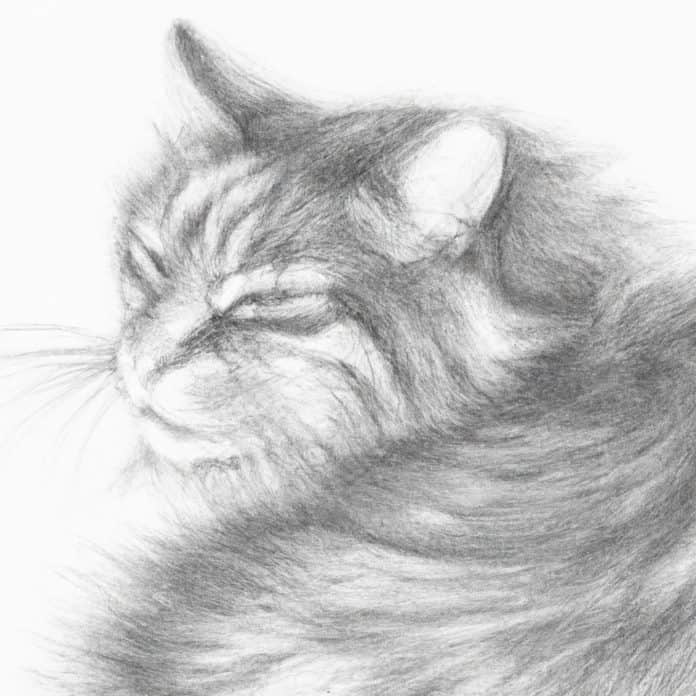Dear VetBabble: What Would Cause Knotted Hair on My Cat’s Back?
One of our readers recently asked, “What would cause my cat to have knotted hair on his back? One day it was not there, and the next day his hair was very knotted. I have two cats. Is there a wound under it that has been discharging or bleeding? Is there something stuck in it? How is the cat in itself?” Let’s explore this important question, as it’s an issue that multiple pet owners may face.
Understanding the Causes of Knotted Hair on Cats
Knotted hair on your cat’s back can be a result of multiple factors, such as accumulation of dirt, debris, or secretion from a wound, lack of grooming, obesity that limits self-grooming, or even type of hair. Identifying the cause of the knotting is crucial in determining the best way to address the issue.
Detail on hair types and grooming: Cats have different hair types, with some easily prone to matting. Longer-haired cats have a greater likelihood of developing tangled hair, which can lead to knots forming on their back. Routine grooming by both the owner and the cat is essential for maintaining their coat’s condition. If your cat is not grooming itself or cannot reach certain areas due to obesity, its coat can become matted. In such cases, increasing their grooming sessions and addressing underlying health issues are vital for an untangled, healthy coat. For more information about grooming issues, check out Hair Loss in Cats.
Underlying skin problems: Wounds, infections, and irritation can lead to your cat developing knots in their hair. When your cat experiences any form of skin problem, hair may clump around the affected area as the skin attempts to heal itself. As a result, this area can become knotted. Common skin issues in cats can be found in this informative article: Skin Problems in Cats: Common Causes and Treatment.
How to Identify and Treat Knotted Hair on Your Cat’s Back
Upon discovering a knotted area on your cat’s back, check for any underlying wounds, irritation, or foreign objects. If you notice any sign of infection or injury, consult your veterinarian as soon as possible before attempting any at-home remedies. It’s essential to rule out any hidden wounds before proceeding with treatment.
In case the knot is a simple tangle, use a wide-toothed comb to gently detangle the area. Start from the tips of the hair and move slowly towards the base, taking care not to hurt your cat’s skin. If the knot is large or tightly bound, you might need to trim the hair gently using scissors. While cutting, maintain a right angle to the skin to prevent accidentally cutting your cat’s skin.
If you find your cat is frequently experiencing hair knots, consider increasing your grooming sessions and adjusting their diet, if recommended by your veterinarian. A healthy diet can help improve skin and coat health. In addition, ensure your cat is well-groomed and clean by implementing a regular grooming regimen. For long-haired cats, daily brushing might be necessary to keep their coat properly maintained and tangle-free.
Conclusion: Addressing Your Cat’s Grooming and Hair Knot
Remember that consistent grooming plays a significant role in preventing matted hair and knots. Long-haired cats are more prone to tangles and should be groomed regularly. If your cat is not grooming him or herself, consider increasing grooming sessions and exploring possible underlying health issues.
Ensure that your cat does not have any skin problems or wounds hidden under their matted hair. Should you notice any indication of infection, injury, or excessive grooming, consult your veterinarian right away. If there is no underlying issue present, that’s a great time to investigate further about grooming issues such as hairballs. Go ahead and read this guide on Hairballs and Cats: What Should I Know?
Lastly, make sure your cat is not experiencing distress or pain due to hair knots or any other reason, such as vomiting, which can be a symptom of a more serious condition. For guidance on how to recognize and treat vomiting in cats, take a look at this article: Why is My Cat Vomiting?
As a pet owner, maintaining proper grooming and care for your cat is essential for their overall health and well-being. Monitoring and promptly addressing any changes in your cat’s coat will keep your feline friend healthy, happy, and tangle-free.









